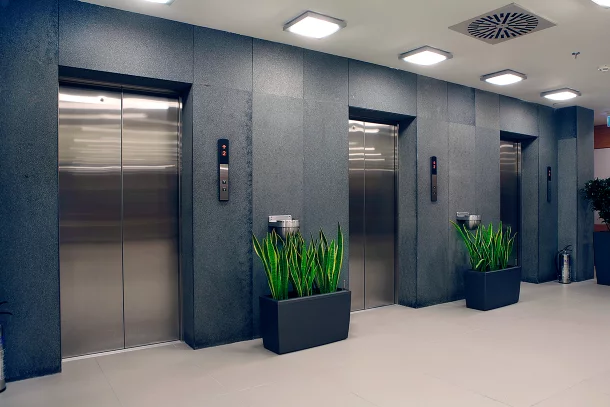Leading Lift Companies in London: Supplying Exceptional Solution and Assistance
Leading Lift Companies in London: Supplying Exceptional Solution and Assistance
Blog Article
Digging Into the Globe of Elevators: Common Problems Encountered by Various Lift Systems
As we browse through the upright transport systems of contemporary structures, lifts stand out as an essential element of our day-to-day lives. From hydraulic lifts to traction systems and machine-room-less styles, each lift kind comes with its collection of common problems.
Hydraulic Lifts
Hydraulic lifts, often chosen for low-rise buildings, make use of fluid stress to control the activity of the lift cars and truck (lift repair companies). This mechanism involves a hydraulic pump pushing oil into a cylinder, creating the lift to relocate in the preferred instructions. While hydraulic lifts are recognized for their quiet and smooth operation, they do feature their very own set of typical problems
One prevalent trouble with hydraulic lifts is oil leakage. Furthermore, issues with the control system, such as damaged shutoffs or a malfunctioning pump, can cause disturbances in the lift's motion.
Regular upkeep and timely repair work are necessary to ensure the smooth performance of hydraulic lifts. By dealing with these common concerns proactively, structure owners can decrease downtime and make sure the safety and performance of their upright transportation system.
Grip Elevators
When considering upright transportation systems in buildings, an additional typical type other than hydraulic elevators is the grip elevator. Traction elevators run utilizing a system of ropes and counterweights that relocate the elevator auto by grasping onto the hoist ropes. This mechanism permits for smoother and quicker vertical transport compared to hydraulic systems.
Among the common concerns faced by grip elevators is rope wear. The consistent movement of the ropes within the grip system can result in damage with time, potentially creating the elevator to breakdown or become harmful for use. Routine examinations and upkeep of the ropes are necessary to ensure the elevator's appropriate functioning and security.
An additional concern that traction lifts may encounter is connected to the control system. Problems with the control system can result in issues such as irregular motion, hold-ups in feedback times, or also full closures. Regular screening and upkeep of the control system are crucial to stop such concerns and ensure the lift's integrity.
Machine-Room-Less (MRL) Elevators

One of the vital parts of MRL elevators is the portable gearless grip machine that is mounted within the hoistway. This device successfully drives the lift cars and truck without the need for cumbersome equipment located in conventional grip elevators. In addition, MRL elevators usually use a weight system to balance the vehicle, further enhancing their power efficiency.
Regardless of their advantages, MRL elevators may deal with obstacles associated with repair and maintenance due to the constrained space for equipment setup. Access for servicing elements within the shaft can be restricted, needing specialized training for specialists. Appropriate upkeep timetables and normal assessments are critical to make sure the continued smooth operation of MRL elevators.
Overloading and Weight Limit Issues
Overloading and weight limit concerns are critical concerns in lift procedures. Elevator suppliers layout raises with particular weight capacities to ensure guest security and equipment longevity.
When lifts are overwhelmed, it puts excessive pressure on the electric motor, cable televisions, and other parts, potentially creating failures or malfunctions. If they discover excess weight, safety mechanisms such as sensing units and overload sensors are in area to avoid elevators from relocating. Additionally, going beyond weight limitations can result in raised energy consumption and deterioration redirected here on the lift system.
To reduce overwhelming concerns, developing managers must plainly show weight restrictions in elevators and inform occupants on the value click over here of adhering to these limitations - lift repair companies. Routine upkeep checks by certified service technicians can also aid guarantee that lifts are operating within safe weight specifications. By addressing overloading and weight limit problems proactively, structure proprietors can enhance lift safety and security and efficiency
Electrical System Failures
Exceeding weight limits in lifts can not just bring about mechanical issues however likewise possibly add to electric system failings within the lift infrastructure. Electrical system failings are an essential concern in elevator operation, as they can trigger unanticipated closures, malfunctions, and even safety and security hazards. One common electrical problem is the overheating of elements because of too much existing circulation brought on by straining the elevator beyond its capability. This can bring about harm to the control, wiring, or motor systems, causing pricey repair work and downtime.
Moreover, power rises or variations in the electrical supply can also interfere with the lift's procedure, influencing its performance and safety. These electric disruptions can harm sensitive elevator elements such as control panels, circuit card, or sensors, bring about system failings. Routine maintenance and evaluations are crucial to determine and deal with potential electric problems promptly, making sure pop over to these guys the efficient and risk-free operation of lift systems. By adhering to weight limitations and conducting regular electrical system checks, structure proprietors can alleviate the threat of electrical failures in lifts.
Verdict

Hydraulic elevators, often liked for low-rise structures, use fluid pressure to manage the activity of the elevator car.When thinking about upright transportation systems in structures, another typical type aside from hydraulic lifts is the traction elevator. Grip elevators operate making use of a system of ropes and counterweights that move the lift automobile by clutching onto the hoist ropes. Unlike standard lifts that need a different machine space to house the tools, MRL elevators integrate many of the components within the shaft, removing the requirement for a dedicated equipment space.In conclusion, elevators deal with typical issues such as hydraulic malfunctions, grip system failures, and electrical system problems.
Report this page